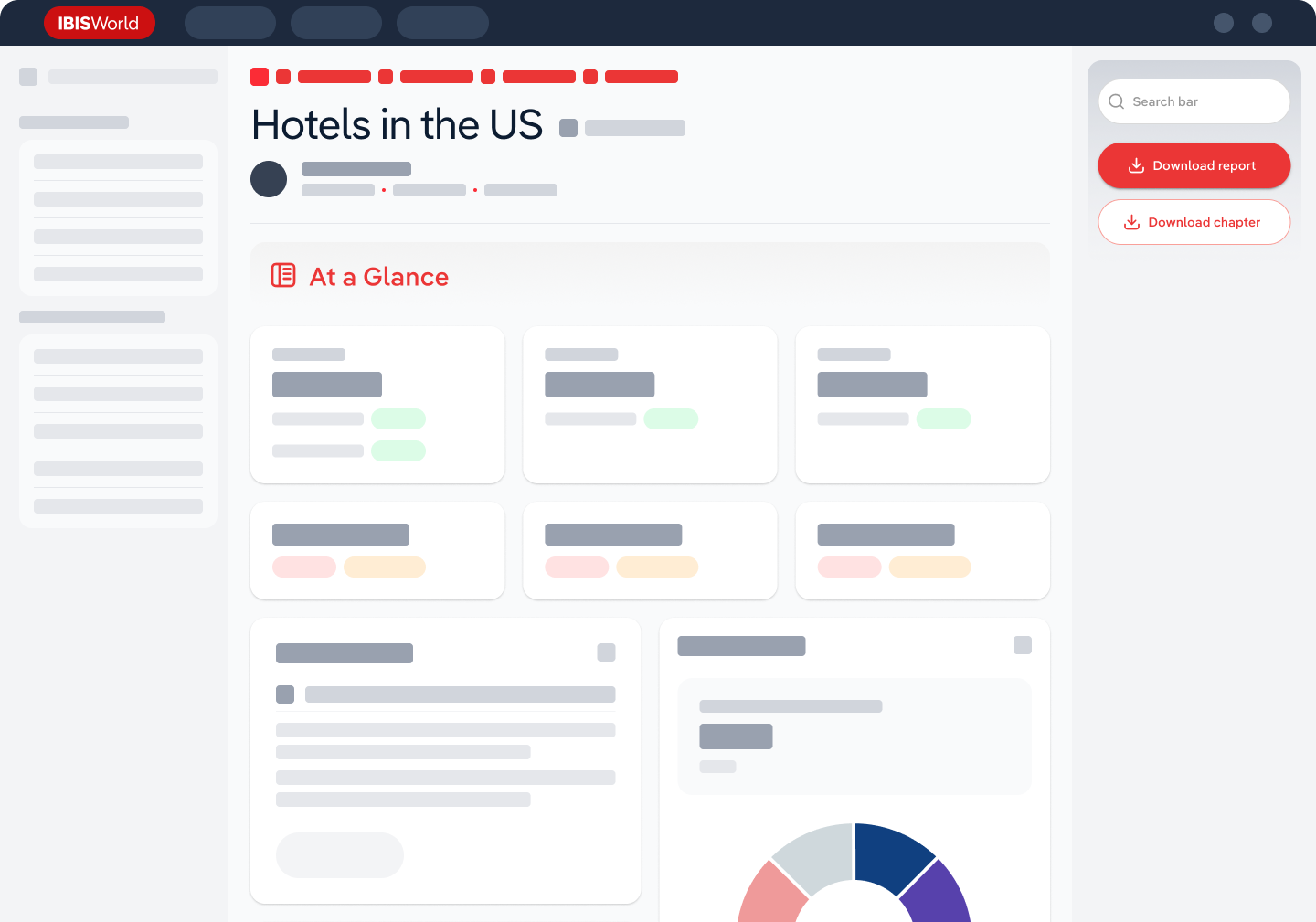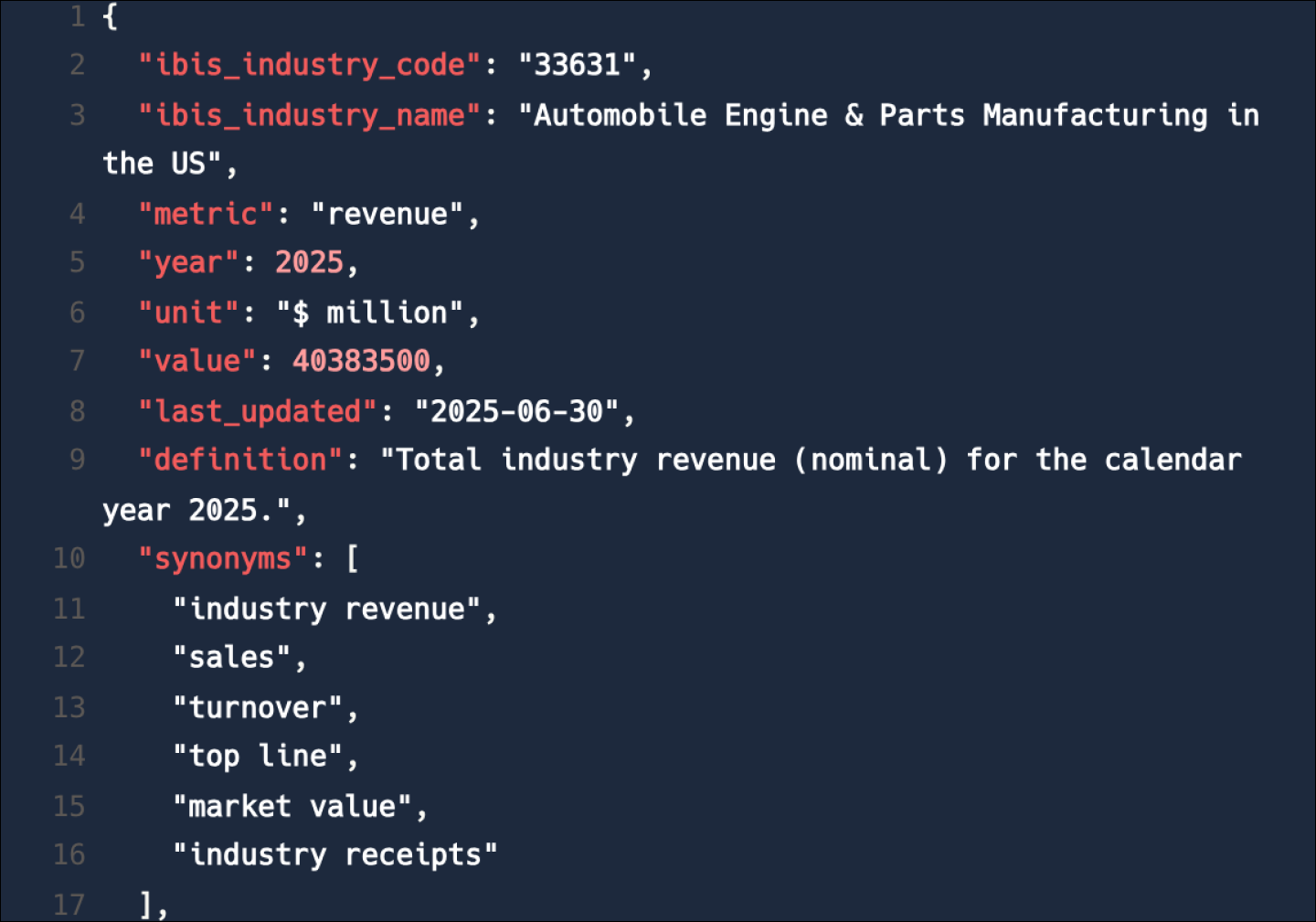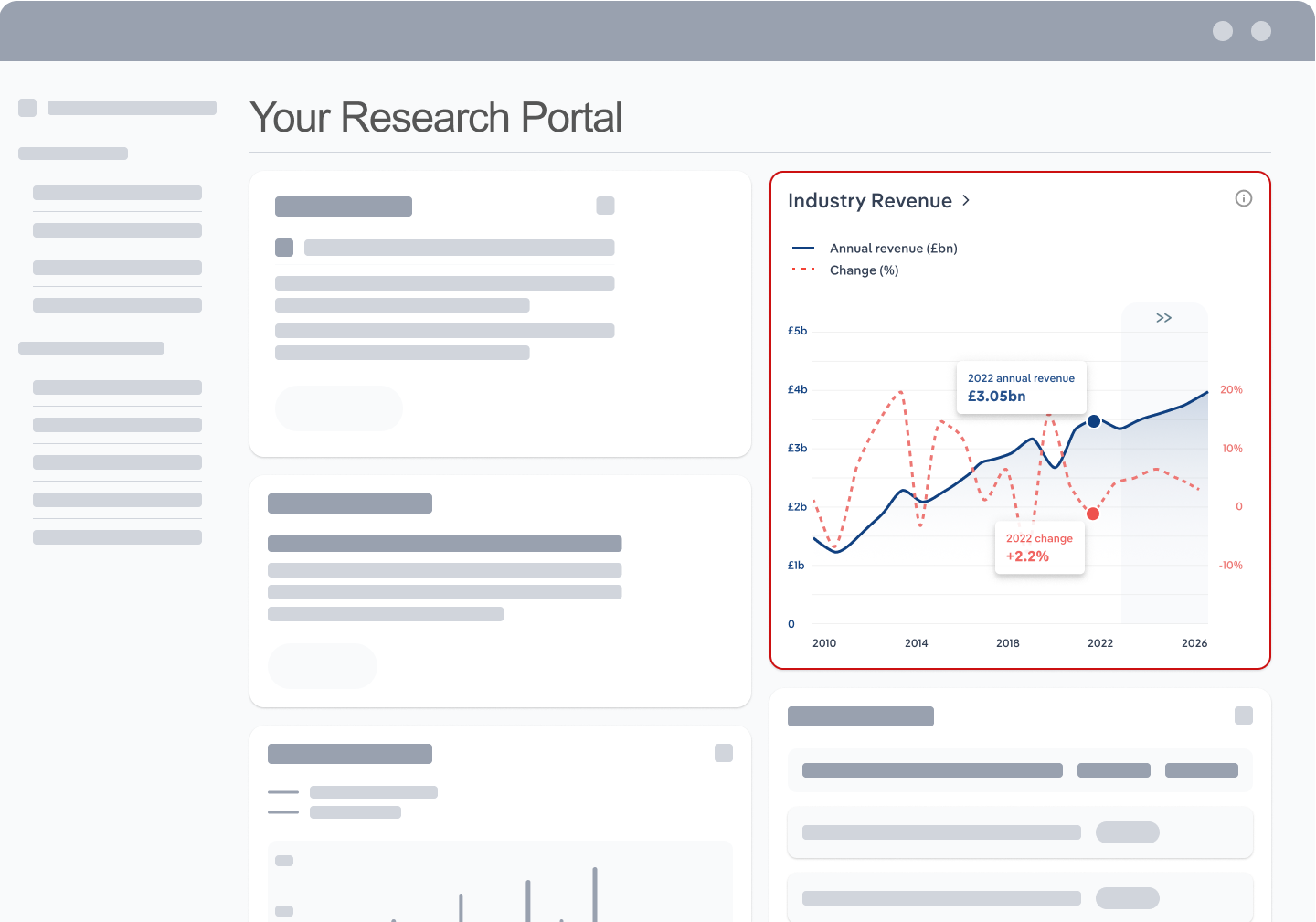Industry Statistics and Trends
Market size and recent performance (2015-2030)
Industry revenue has declined at a CAGR of 11.4 % over the past five years, to reach an estimated $8.9bn in 2025.
Trends and Insights
Australia's last two refineries have faced operational challenges and issues amid climbing global refinery production
- During the 2022 calendar year, refining margins at Australia's last remaining petrol refineries underwent an unprecedented surge, with both companies enjoying around 140.0% margin gains. Ampol and Viva capitalised on this trend, contributing to a sharp uptick in industry-wide turnover and profitability. A widespread recovery in the broader aviation sector as pandemic restrictions eased has also contributed to aviation turbine fuel production surging over the two years through 2023-24.
- Additional trends and insights available with purchase
Industry outlook (2025-2030)
Market size is projected to decline over the next five years.
Trends and Insights
Fierce competition and falling prices present a significant challenge to local refiners
- Production at Australia's last remaining refineries is projected to fall over the coming years. With just two left in operation, the industry will struggle to remain competitive with import competition on track to intensify over the period. Retailers and wholesalers will likely shift to imported fuel, especially if any local refineries undergo maintenance issues.
Biggest companies in the Petroleum Refining and Petroleum Fuel Manufacturing in Australia
| Company | Market Share (%)
2025 | Revenue ($m)
2025 |
|---|---|---|
Viva Energy Australia | 5,291.3 | |
Ampol | 3,329.4 |
To view the market share and analysis for all 2 top companies in this industry, view purchase options.
Products & Services Segmentation
Industry revenue is measured across several distinct product and services lines, including Automotive petroleum, Diesel and Aviation turbine fuel. Automotive petroleum is the largest segment of the Petroleum Refining and Petroleum Fuel Manufacturing in Australia.
Trends and Insights
Refiners seek to capitalise on domestic prices for automotive petroleum
- The industry's product segmentation reflects refinery configuration and downstream demand. Typically, refineries are configured to maximise the output of in-demand petroleum products because of the physical limitations that crude oil inputs impose and the size of Australian refineries. Instead, refiners concentrate on supplying key transport fuels, like petrol.
- More insights available in the full report
Table of Contents
About this industry
Industry definition
Industry companies primarily refine crude oil or condensate (a light form of oil) to produce petrol, fuel oil, aviation fuel, grease base stock, petroleum gases and other petroleum products. Companies also blend materials into petroleum fuels and manufacture fuels from the liquefaction of petroleum gases. These products are then marketed by wholesalers and retailers, which may be owned by firms that operate the refineries.
What's included in this industry?
Products and services covered in the Petroleum Refining and Petroleum Fuel Manufacturing industry in Australia include Automotive petroleum, Diesel, Aviation turbine fuel, Fuel oil, LPG and Synthetic petroleum.Companies
Companies covered in the Petroleum Refining and Petroleum Fuel Manufacturing industry in Australia include Viva Energy Australia and Ampol.Purchase this report to view all 2 major companies in this industry.
Related Terms
Related terms covered in the Petroleum Refining and Petroleum Fuel Manufacturing industry in Australia include catalytic hydrocracking, naphtha, fractional distillation and kerosene.Industry Code
ANZSIC 1701 - Petroleum Refining and Petroleum Fuel Manufacturing in Australia
Performance
Get an indication of the industry's health through historical, current and forward-looking trends in the performance indicators that make or break businesses.
Analyst insights
The industry is in a state of decline, following a series of refinery closures. Rising import competition has heavily weighed on the performance of petrol refineries in Austr...
In this chapter (4)
- Current Performance
- Outlook
- Volatility
- Life Cycle
Key metrics
- Annual Revenue, Recent Growth, Forecast, Revenue Volatility
- Number of Employees, Recent Growth, Forecast, Employees per Business, Revenue per Employee
- Number of Businesses, Recent Growth, Forecast, Employees per Business, Revenue per Business
- Total Profit, Profit Margin, Profit per Business
Charts
- Revenue, including historical (2015-2024) and forecast (2025-2030)
- Employees, including historical (2015-2024) and forecast (2025-2030)
- Businesses, including historical (2015-2024) and forecast (2025-2030)
- Profit, including historical (2015-2025)
- Industry Volatility vs. Revenue Growth
- Industry Life Cycle
Detailed analysis
- Trends in supply, demand and current events that are driving current industry performance
- Expected trends, economic factors and ongoing events that drive the industry's outlook
- Key success factors for businesses to overcome volatility
- How contribution to GDP, industry saturation, innovation, consolidation, and technology and systems influence the industry's life cycle phase.
Products and Markets
Learn about an industry's products and services, markets and trends in international trade.
Analyst insight
High domestic demand in 2022 produced a surge in the production of automotive fuels. Local refineries sought to capitalise on favourable refining margins and hold ups in glob...
In this chapter
- Products & Services
- Major Markets
- International Trade
Key metrics
- Largest market segment and value in 2025
- Product innovation level
- Total imports, level and trend
- Total exports, level and trend
- Trade Balance
Charts
- Products & services segmentation in 2025
- Major market segmentation in 2025
- International trade, including imports by country and exports by country
Detailed analysis
- Trends impacting the recent performance of the industry's various segments
- Innovations in the industry's product or service offering, specialization or delivery method
- Key factors that successful businesses consider in their offerings
- Buying segments and key trends influencing demand for industry products and services
- Recent trends in import and export volumes, country of origin or destination, and expected future trends
Geographic Breakdown
Discover where business activity is most concentrated in an industry and the factors driving these trends to find opportunities and conduct regional benchmarking.
Analyst insights
The last refineries remaining in Australia are located in Victoria and Queensland. Over the past decade, global energy giants like BP and Shell have either divested or closed...
In this chapter (1)
- Business Locations
Charts
- Share of revenue, establishment, wages and employment in each region
- Share of population compared to establishments in each region in 2025
Tables
- Number and share of establishments in each region in 2025
- Number and share of revenue each region accounts for in 2025
- Number and share of wages each region accounts for in 2025
- Number and share of employees in each region in 2025
Detailed analysis
- Geographic spread of the industry across Asia Pacific, and trends associated with changes in the business landscape
- Key success factors for businesses to use location to their advantage
Competitive Forces
Get data and insights on what's driving competition in an industry and the challenges industry operators and new entrants may face, with analysis built around Porter's Five Forces framework.
Analyst insights
There are just two refineries left in Australia, which concentrates market share in the hands of Viva and Ampol. There are other smaller-scale operators, but the turnover com...
In this chapter (4)
- Concentration
- Barriers to Entry
- Substitutes
- Buyer & Supplier Analysis
Key metrics
- Industry concentration level
- Industry competition level and trend
- Barriers to entry level and trend
- Substitutes level and trend
- Buyer power level and trend
- Supplier power level and trend
Charts
- Market share concentration among the top 4 suppliers from 2020-2025
- Supply chain including upstream supplying industries and downstream buying industries, flow chart
Detailed analysis
- Factors impacting the industry’s level of concentration, such as business distribution, new entrants, or merger and acquisition activity.
- Key success factors for businesses to manage the competitive environment of the industry.
- Challenges that potential industry entrants face such as legal, start-up costs, differentiation, labor/capital intensity and capital expenses.
- Key success factors for potential entrants to overcome barriers to entry.
- Competitive threats from potential substitutes for the industry’s own products and services.
- Key success factors for how successful businesses can compete with substitutes.
- Advantages that buyers have to keep favorable purchasing conditions.
- Advantages that suppliers have to maintain favorable selling conditions.
- Key success factors for how businesses can navigate buyer and supplier power.
Companies
Learn about the performance of the top companies in the industry.
Analyst insights
In 2022, Viva and Ampol capitalised on higher refining margins thanks to elevated prices and constrained supply. However, unexpected operational setbacks and a jump in global...
In this chapter
- Market Share Concentration
- Companies
- Company Spotlights
Charts
- Industry market share by company in 2021 through 2025
- Major companies in the industry, including market share, revenue, profit and profit margin in 2025
- Overview of Viva Energy Australia's performance by revenue, market share and profit margin from 2019 through 2025
- Overview of Ampol's performance by revenue, market share and profit margin from 2019 through 2025
Detailed analysis
- Description and key data for Viva Energy Australia, and factors influencing its performance in the industry
- Description and key data for Ampol, and factors influencing its performance in the industry
External Environment
Understand the demographic, economic and regulatory factors that shape how businesses in an industry perform.
Analyst insights
The number of motor vehicles and air kilometres flown is a key indicator of downstream demand as they boost refined fuel demand. However, any dip in these metrics or a transi...
In this chapter
- External Drivers
- Regulation & Policy
- Assistance
Key metrics
- Regulation & policy level and trend
- Assistance level and trend
Charts
- Regulation & Policy historical data and forecast (2015-2030)
- Assistance historical data and forecast (2015-2030)
Detailed analysis
- Demographic and macroeconomic factors influencing the industry, including Regulation & Policy and Assistance
- Major types of regulations, regulatory bodies, industry standards or specific regulations impacting requirements for industry operators
- Key governmental and non-governmental groups or policies that may provide some relief for industry operators.
Financial Benchmarks
View average costs for industry operators and compare financial data against an industry's financial benchmarks over time.
Analyst insights
Profit margins surged as pandemic restrictions eased and geopolitical tensions constrained supply in 2022. The price of refined fuel surged, while supply of imports was disru...
In this chapter
- Cost Structure
- Financial Ratios
- Key Ratios
Key metrics
- Profit margin, and how it compares to the sector-wide margin
- Average wages, and how it compares to the sector-wide average wage
- Largest cost component as a percentage of revenue
- Industry average ratios for days' receivables, industry coverage and debt-to-net-worth ratio
Charts
- Average industry operating costs as a share of revenue, including purchases, wages, depreciation, utilities, rent, other costs and profit in 2025
- Average sector operating costs as a share of revenue, including purchases, wages, depreciation, utilities, rent, other costs and profit in 2025
- Investment vs. share of economy
Data tables
- Cash Flow & Debt Service Ratios (2015-2030)
- Revenue per Employee (2015-2030)
- Revenue per Enterprise (2015-2030)
- Employees per Establishment (2015-2030)
- Employees per Enterprise (2015-2030)
- Average Wage (2015-2030)
- Wages/Revenue (2015-2030)
- Establishments per Enterprise (2015-2030)
- IVA/Revenue (2015-2030)
- Imports/Demand (2015-2030)
- Exports/Revenue (2015-2030)
Detailed analysis
- Trends in the cost component for industry operators and their impact on industry costs and profitability
Key Statistics
Industry Data
Data Tables
Including values and annual change:
- Revenue (2015-2030)
- IVA (2015-2030)
- Establishments (2015-2030)
- Enterprises (2015-2030)
- Employment (2015-2030)
- Exports (2015-2030)
- Imports (2015-2030)
- Wages (2015-2030)
Top Questions Answered
Unlock comprehensive answers and precise data upon purchase. View purchase options.
What is the market size of the Petroleum Refining and Petroleum Fuel Manufacturing industry in Australia in 2025?
The market size of the Petroleum Refining and Petroleum Fuel Manufacturing industry in Australia is $8.9bn in 2025.
How many businesses are there in the Petroleum Refining and Petroleum Fuel Manufacturing industry in Australia in 2025?
There are 177 businesses in the Petroleum Refining and Petroleum Fuel Manufacturing industry in Australia, which has grown at a CAGR of 5.3 % between 2020 and 2025.
How may import tariffs affect the Petroleum Refining and Petroleum Fuel Manufacturing industry in Australia?
The Petroleum Refining and Petroleum Fuel Manufacturing industry in Australia is likely to be significantly impacted by import tariffs with imports accounting for a high share of industry revenue.
How may export tariffs affect the Petroleum Refining and Petroleum Fuel Manufacturing industry in Australia?
The Petroleum Refining and Petroleum Fuel Manufacturing industry in Australia is likely to be significantly impacted by export tariffs with exports accounting for a high share of industry revenue.
Has the Petroleum Refining and Petroleum Fuel Manufacturing industry in Australia grown or declined over the past 5 years?
The market size of the Petroleum Refining and Petroleum Fuel Manufacturing industry in Australia has been declining at a CAGR of 11.4 % between 2020 and 2025.
What is the forecast growth of the Petroleum Refining and Petroleum Fuel Manufacturing industry in Australia over the next 5 years?
Over the next five years, the Petroleum Refining and Petroleum Fuel Manufacturing industry in Australia is expected to decline.
What are the biggest companies in the Petroleum Refining and Petroleum Fuel Manufacturing industry in Australia?
The biggest companies operating in the Petroleum Refining and Petroleum Fuel Manufacturing industry in Australia are Viva Energy Australia and Ampol
What does the Petroleum Refining and Petroleum Fuel Manufacturing industry in Australia include?
Automotive petroleum and Diesel are part of the Petroleum Refining and Petroleum Fuel Manufacturing industry in Australia.
Which companies have the highest market share in the Petroleum Refining and Petroleum Fuel Manufacturing industry in Australia?
The company holding the most market share in the Petroleum Refining and Petroleum Fuel Manufacturing industry in Australia is Viva Energy Australia.
How competitive is the Petroleum Refining and Petroleum Fuel Manufacturing industry in Australia?
The level of competition is moderate and increasing in the Petroleum Refining and Petroleum Fuel Manufacturing industry in Australia.
Methodology
How are IBISWorld reports created?
IBISWorld has been a leading provider of trusted industry research for over 50 years to the most successful companies worldwide. With offices in Australia, the United States, the United Kingdom, Germany and China, we are proud to have local teams of analysts that conduct research, data analysis and forecasting to produce data-driven industry reports.
Our analysts start with official, verified and publicly available sources of data to build the most accurate picture of each industry. Analysts then leverage their expertise and knowledge of the local markets to synthesize trends into digestible content for IBISWorld readers. Finally, each report is reviewed by one of IBISWorld’s editors, who provide quality assurance to ensure accuracy and readability.
IBISWorld relies on human-verified data and human-written analysis to compile each standard industry report. We do not use generative AI tools to write insights, although members can choose to leverage AI-based tools within the platform to generate additional analysis formats.
What data sources do IBISWorld analysts use?
Each industry report incorporates data and research from government databases, industry-specific sources, industry contacts, and our own proprietary database of statistics and analysis to provide balanced, independent and accurate insights.
Key data sources in Australia include:
- Australian Bureau of Statistics
- Australian Taxation Office
- Australian Securities & Investments Commission
Analysts also use industry specific sources to complement catch-all sources, although their perspective may focus on a particular organization or representative body, rather than a clear overview of all industry operations. However, when balanced against other perspectives, industry-specific sources provide insights into industry trends.
These sources include:
- Industry and trade associations
- Industry federations or regulators
- Major industry players annual or quarterly filings
Finally, IBISWorld’s global data scientists maintain a proprietary database of macroeconomic and demand drivers, which our analysts use to help inform industry data and trends. They also maintain a database of statistics and analysis on thousands of industries, which has been built over our more than 50-year history and offers comprehensive insights into long-term trends.
How does IBISWorld forecast its data?
IBISWorld’s analysts and data scientists use the sources above to create forecasts for our proprietary datasets and industry statistics. Depending on the dataset, they may use regression analysis, multivariate analysis, time-series analysis or exponential smoothing techniques to project future data for the industry or driver. Additionally, analysts will leverage their local knowledge of industry operating and regulatory conditions to impart their best judgment on the forecast model.
IBISWorld prides itself on being a trusted, independent source of data, with over 50 years of experience building and maintaining rich datasets and forecasting tools. We are proud to be the keystone source of industry information for thousands of companies across the world.
Learn more about our methodology and data sourcing on the Help Center.










